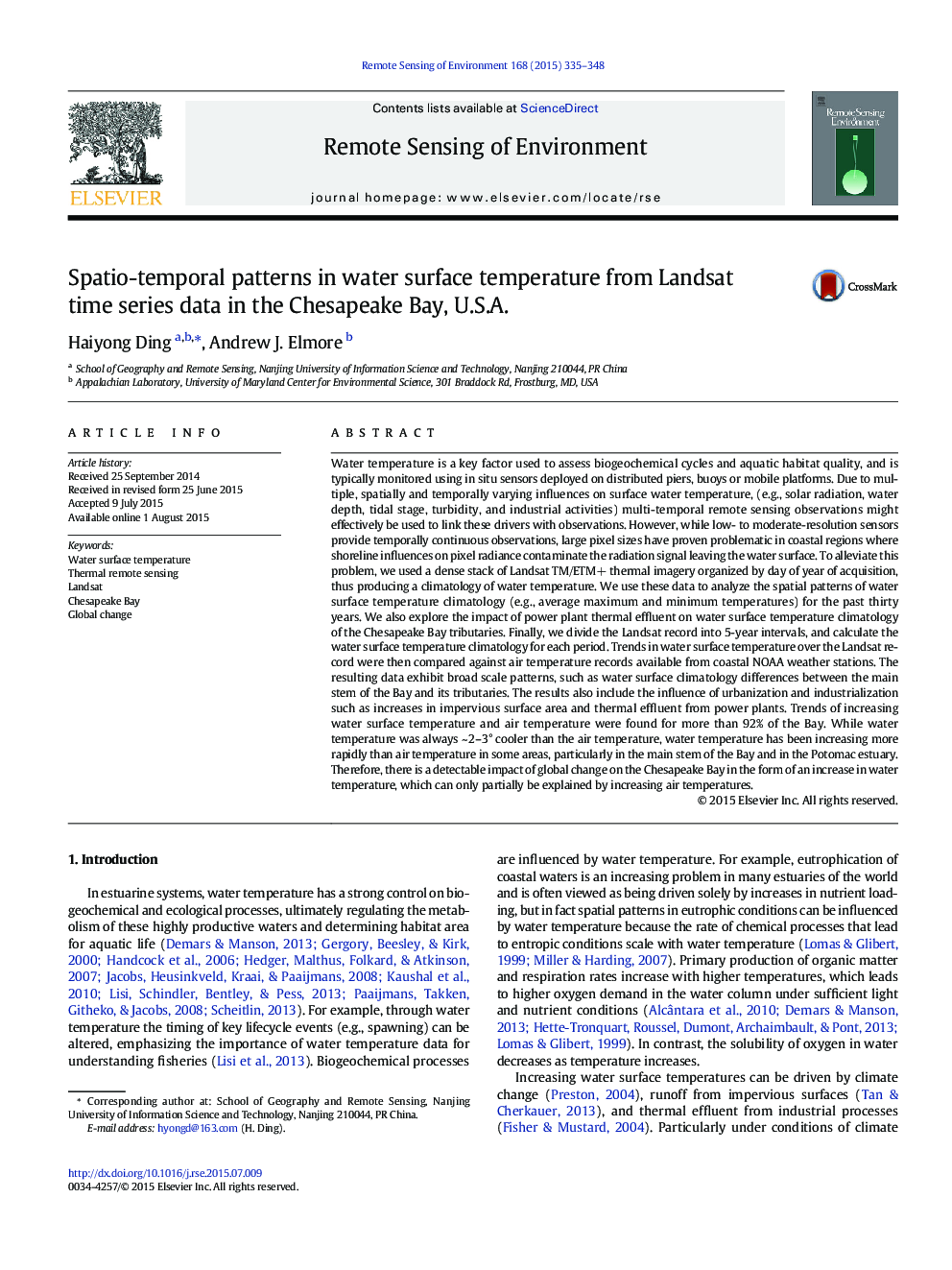| کد مقاله | کد نشریه | سال انتشار | مقاله انگلیسی | نسخه تمام متن |
|---|---|---|---|---|
| 4458826 | 1621232 | 2015 | 14 صفحه PDF | دانلود رایگان |

• Estuarine Water Surface Temperature (WST) is derived from Landsat imagery.
• The entire archive successfully fit an annual temperature cycle (ATC) model.
• ATC modeled uncertainty in annual maximum and minimum temperature was 22.7843 °C/1.1678 °C.
• Trends of increasing WST over the past 30 years range from 0.05 °C to 0.10 °C per year.
• The effects on WST of estuary geography, urbanization, and climate are apparent.
Water temperature is a key factor used to assess biogeochemical cycles and aquatic habitat quality, and is typically monitored using in situ sensors deployed on distributed piers, buoys or mobile platforms. Due to multiple, spatially and temporally varying influences on surface water temperature, (e.g., solar radiation, water depth, tidal stage, turbidity, and industrial activities) multi-temporal remote sensing observations might effectively be used to link these drivers with observations. However, while low- to moderate-resolution sensors provide temporally continuous observations, large pixel sizes have proven problematic in coastal regions where shoreline influences on pixel radiance contaminate the radiation signal leaving the water surface. To alleviate this problem, we used a dense stack of Landsat TM/ETM+ thermal imagery organized by day of year of acquisition, thus producing a climatology of water temperature. We use these data to analyze the spatial patterns of water surface temperature climatology (e.g., average maximum and minimum temperatures) for the past thirty years. We also explore the impact of power plant thermal effluent on water surface temperature climatology of the Chesapeake Bay tributaries. Finally, we divide the Landsat record into 5-year intervals, and calculate the water surface temperature climatology for each period. Trends in water surface temperature over the Landsat record were then compared against air temperature records available from coastal NOAA weather stations. The resulting data exhibit broad scale patterns, such as water surface climatology differences between the main stem of the Bay and its tributaries. The results also include the influence of urbanization and industrialization such as increases in impervious surface area and thermal effluent from power plants. Trends of increasing water surface temperature and air temperature were found for more than 92% of the Bay. While water temperature was always ~ 2–3° cooler than the air temperature, water temperature has been increasing more rapidly than air temperature in some areas, particularly in the main stem of the Bay and in the Potomac estuary. Therefore, there is a detectable impact of global change on the Chesapeake Bay in the form of an increase in water temperature, which can only partially be explained by increasing air temperatures.
Journal: Remote Sensing of Environment - Volume 168, October 2015, Pages 335–348